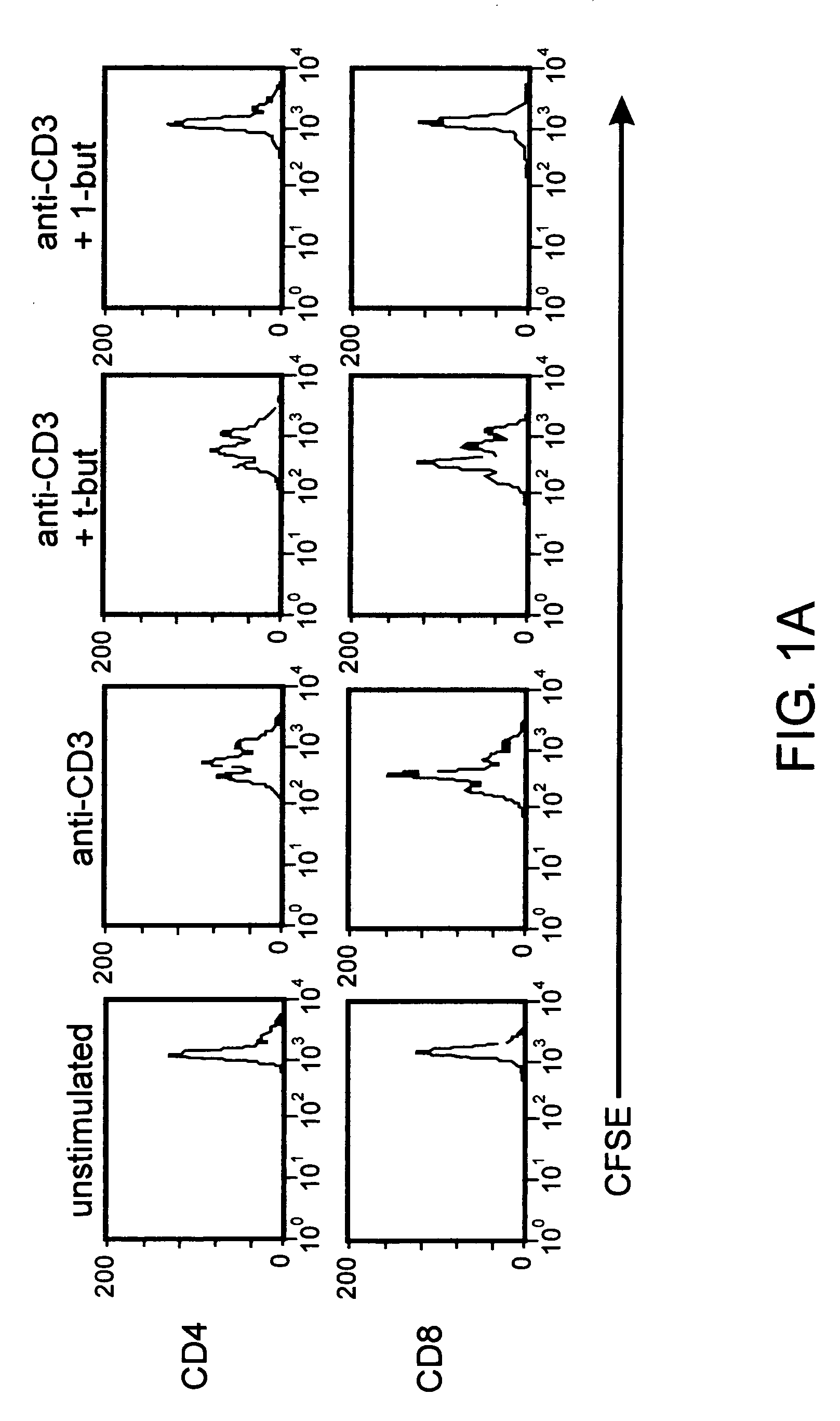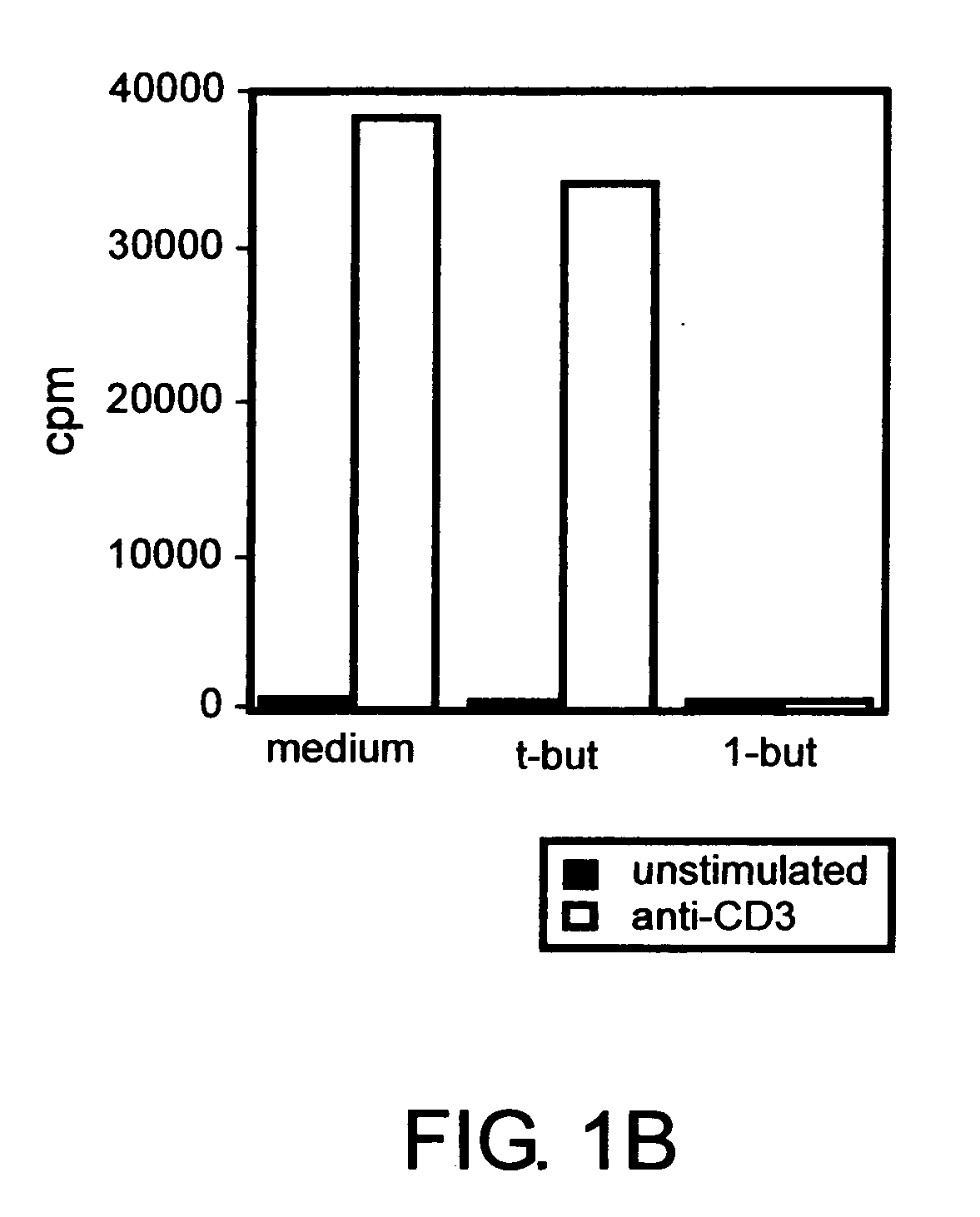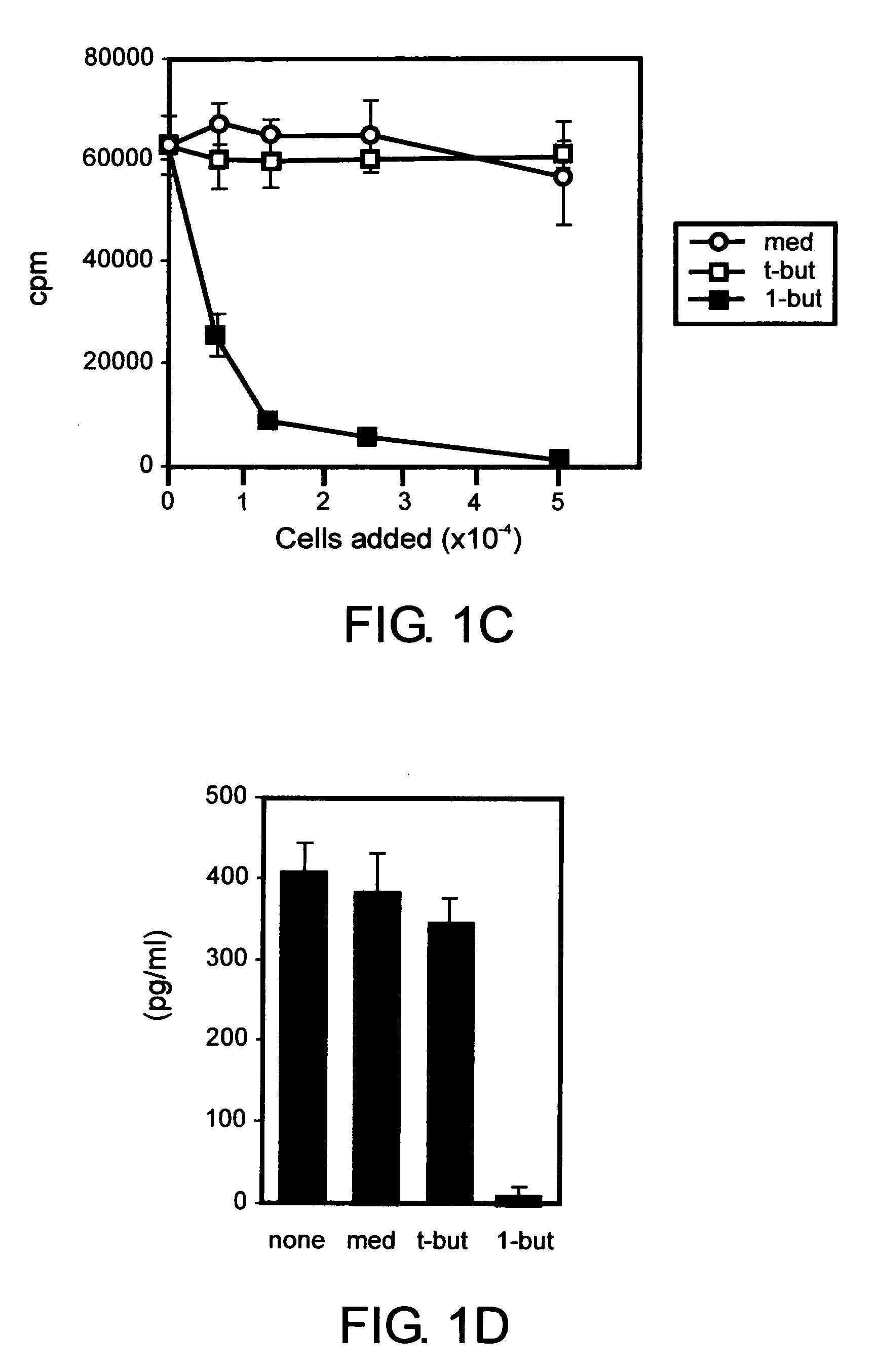Tolerogenic vaccine and method
- Summary
- Abstract
- Description
- Claims
- Application Information
AI Technical Summary
Benefits of technology
Problems solved by technology
Method used
Image
Examples
examples
[0078] The invention can be further understood by the following non-limiting examples.
[0079] The following examples show that a PLD-generated signal is required for expansion of effector T cells but is dispensable for proliferation of CD4+CD25+ regulatory T cells but is dispensable for expansion of CD4+CD25+ regulatory T cells. Inhibition of PLD-generated lipid signaling blocked proliferative responses by non-regulatory CD4+CD25− T cells following TCR engagement. The same treatment had no significant effect on the proliferation of CD4+CD25+ T cells that developed regulatory functions under these conditions. The data identify a PLD-mediated signal as a key determinant of the outcome of T cell responses to TCR stimulation.
[0080] To study the role of PLD in primary murine T cells, we assessed the effect of 1-butanol treatment on splenic T cell proliferation. Carboxyfluorescein diacetate succinimidyl ester (CFSE)-labeled primary T cells were stimulated in vitro with anti-CD3 antibody ...
PUM
| Property | Measurement | Unit |
|---|---|---|
| Length | aaaaa | aaaaa |
| Cell growth | aaaaa | aaaaa |
Abstract
Description
Claims
Application Information
 Login to View More
Login to View More - R&D
- Intellectual Property
- Life Sciences
- Materials
- Tech Scout
- Unparalleled Data Quality
- Higher Quality Content
- 60% Fewer Hallucinations
Browse by: Latest US Patents, China's latest patents, Technical Efficacy Thesaurus, Application Domain, Technology Topic, Popular Technical Reports.
© 2025 PatSnap. All rights reserved.Legal|Privacy policy|Modern Slavery Act Transparency Statement|Sitemap|About US| Contact US: help@patsnap.com



